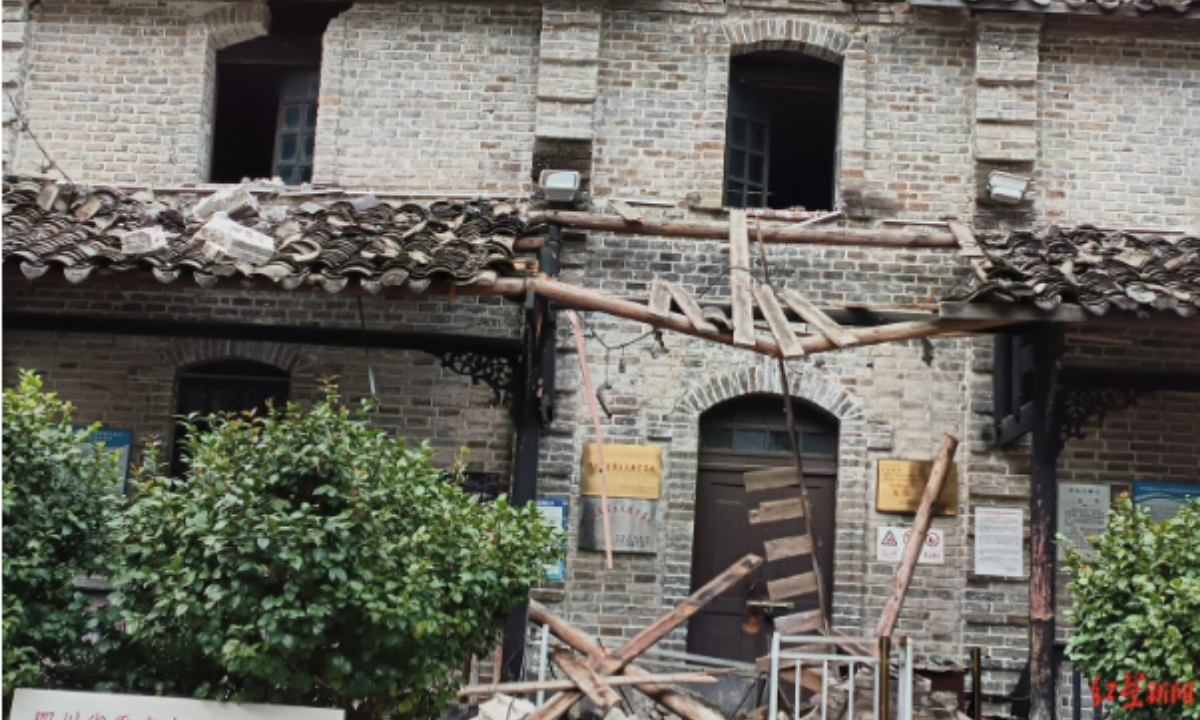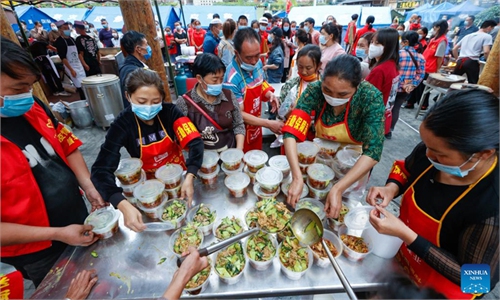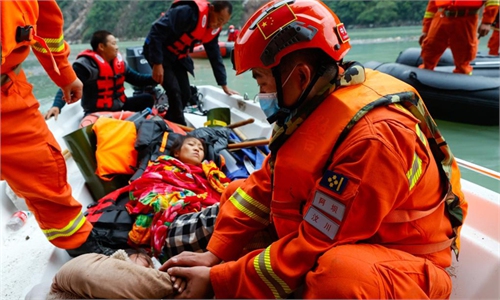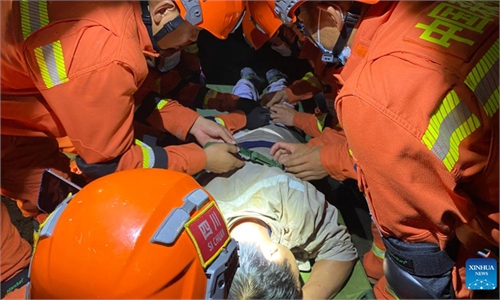Historic site where Mao Zedong lived damaged after earthquake in Sichuan; emergency response launched for protection

A building of the Catholic church where late Chinese leader Mao Zedong lived and held meetings for the Long March journey in Moxi township in Luding county, Southwest China's Sichuan Province Photo: Red Star News
Authorities in Southwest China's Sichuan Province have launched an emergency plan after a 104-year-old historic site was damaged by the 6.8-magnitude earthquake that jolted Sichuan's Luding county on Monday noon, the significant location is the place where late Chinese leader Mao Zedong lived and held meetings for the Long March journey. The earthquake has claimed 82 lives as of Thursday morning.
The historic site, featuring a Catholic church, is located in the epicenter of Moxi township in Luding county and it is one of the most popular local tourist attractions, receiving more than 50,000 visitors every year.
The church building suffered from different degrees of damage: some of the walls show cracks over a foot long, pillars appear deformed, the roof collapsed and the house structure is damaged, announced Sichuan Cultural Heritage Bureau on Wednesday.
In order to ensure the safety of nearby residents, the government has set up a cordon around the church.
The bureau said it has launched an emergency plan, deploying post-disaster investigation and temporary protection of cultural relics to prevent aftershocks from causing secondary damage to the building.
The office will also organize experts to carry out protection and repair work as soon as possible to restore the original appearance of the site, said the bureau.
Some architects who came to the site after the earthquake said the repair work might be very difficult and expert evaluation will be needed to determine whether the site should be reconstructed or repaired, reported the Sichuan-based media Red Star.
The Catholic church was constructed by missionaries in 1918. Mao and the Red Army stayed at the church in Moxi township on May 29, 1935 after marching for three days. In the evening, he held a meeting with other leaders in there, which is known as the "Moxi meeting" and that determined a specific plan for the following army advancement.
In the buildings of the church, some of the objects once used by the Red Army were displayed for visitors before Monday's quake shook the site.




